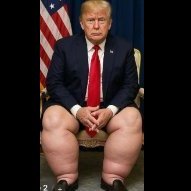Traffic Ho Chi Minh City Chokes as Vehicle Pollution Reaches Critical Levels
-
Recently Browsing 0 members
- No registered users viewing this page.
-
Topics
-
-
Popular Contributors
-
-
Latest posts...
-
5
USA Ghislaine Maxwell’s Staggering Demands for Congressional Testimony
Epic rack still firm ? I'd consider -
121
Could this be the Final nail in Pattaya's coffin ??
So called ceasefires o amnesties have been broken twice so far. -
47
Report EU and US Strike Blockbuster Deal: 15% Tariffs on EU Exports
The EU Single (Internal) market and Customs Union operate efficiently. The EU - like the UK and the US - is a member of the WTO. Like the UK, the EU abides by WTO rules. Unfortunately, the US has chosen not to. That suggests that if any country (bloc) is guilty of protectionism, it is the US and not the EU (or UK). According to World Bank figures, the average weighted mean tariff rate in 2021 was 1.47% for the US, 1.38% for the EU and 0.74% for the UK. Once again, hardly indicative of protectionism on the part of the EU. (Note: 2021 figures were the latest figures which I could easily find). I'll pre-empt the objection that EU regulation on such niceties as animal welfare and safety standards act as non-tariff barriers by pointing out the obvious fact that EU companies have to abide by these exact same regulations. I don't expect these facts to make a blind bit of difference to your opinion as your irrational, ill-informed hatred of the EU appears to know no bounds. -
25
Stickman review of pattaya
I turned up at a Thai restaurant Sunday night on the North end of the Railway Line and there were quite a few coaches arriving there... they really took over the place. -
69
Thai - Cambodia Conflict US Again Urges Thailand to De-escalate Border Conflict with Cambodia
Multiple bickering posts removed. -
5
USA Ghislaine Maxwell’s Staggering Demands for Congressional Testimony
If she clearly states that Donald J Trump took no part in the Epstein activities she'll be given a pardon by said Trump. That's why Trump's lawyer (now DOJ official) is meeting up with her. There are no coincidences.
-
-
Popular in The Pub









Recommended Posts
Create an account or sign in to comment
You need to be a member in order to leave a comment
Create an account
Sign up for a new account in our community. It's easy!
Register a new accountSign in
Already have an account? Sign in here.
Sign In Now